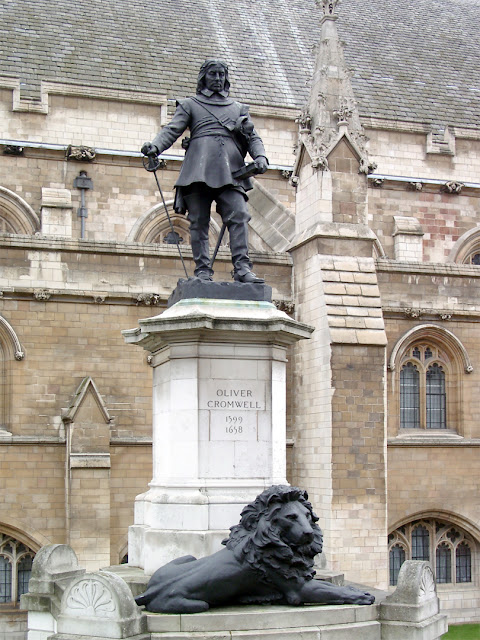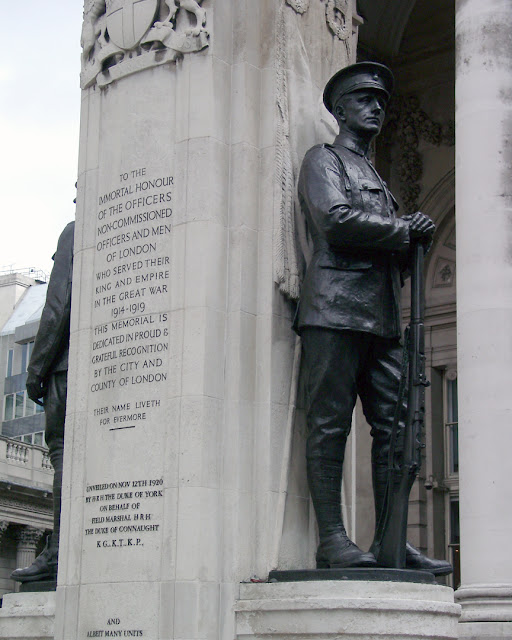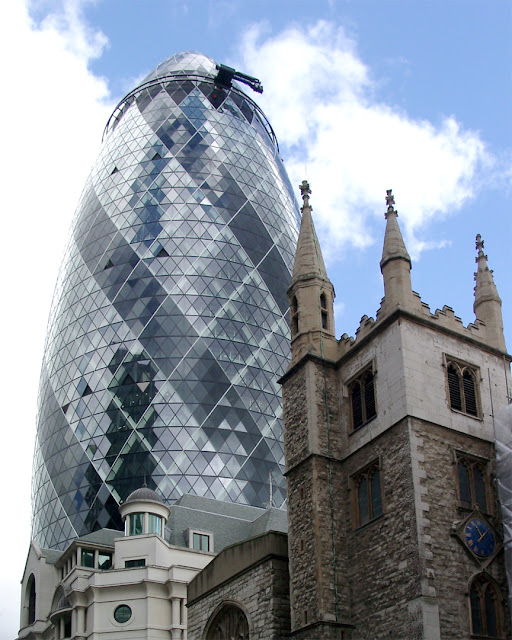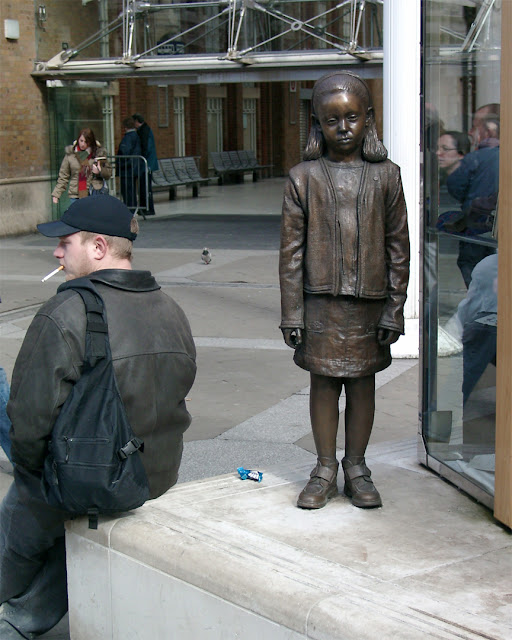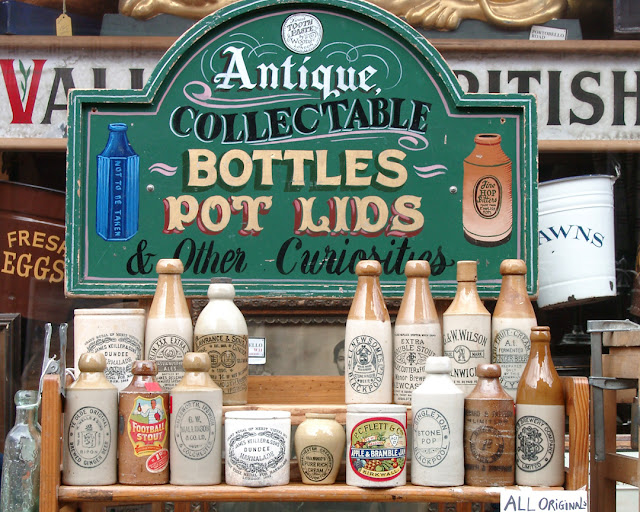Thursday, March 31, 2005
Wednesday, March 30, 2005
Tuesday, March 29, 2005
Monday, March 28, 2005
Sunday, March 27, 2005
Saturday, March 26, 2005
Friday, March 25, 2005
Thursday, March 24, 2005
Wednesday, March 23, 2005
Tuesday, March 22, 2005
Monday, March 21, 2005
Richard Coeur de Lion
Richard Coeur de Lion by Carlo Marochetti, 1856
Old Palace Yard
Palace of Westminster
London, March 2004
“Richard Coeur de Lion is a Grade II listed equestrian statue of the 12th-century English monarch Richard I, also known as Richard the Lionheart, who reigned from 1189–1199. It stands on a granite pedestal in Old Palace Yard outside the Palace of Westminster in London, facing south towards the entrance to the House of Lords. It was created by Baron Carlo Marochetti, an Italian sculptor whose works were popular with European royalty and the nobility, though often less well regarded by critics and the artistic establishment. The statue was first produced in clay and displayed at The Great Exhibition in 1851, where it was located outside the west entrance to the Crystal Palace. It was well received at the time and two years later Queen Victoria and Prince Albert headed a list of illustrious subscribers to a fund that aimed to raise money for the casting of the statue in bronze. Although the money was duly raised and the bronze cast of the statue was finally completed in 1856, a lengthy dispute delayed its installation for several years. The original idea had been to erect the statue as a memorial to the Great Exhibition. This prompted opposition, as did proposals to place it outside Charles Barry's newly completed Palace of Westminster. Various other locations to display the statue were initially considered before agreement was reached that it would be placed in Old Palace Yard, Marochetti's preferred location. It was installed in October 1860, though it was not until March 1867 that it was finally completed with the addition of bronze bas-reliefs on either side of the pedestal. The quality of the statue's workmanship caused problems during its first half-century; the horse's tail fell off the day after it was installed at the Great Exhibition, and forty years after its installation it was discovered to be riddled with holes and to have never been properly attached to its pedestal. It narrowly escaped destruction during the Second World War when a German bomb dropped during the Blitz landed a few metres away and peppered it with shrapnel. The pedestal and the horse's tail were damaged and Richard's sword was bent by the blast. In 2009, the Parliamentary authorities undertook a project to conserve and restore the statue.” (Richard Coeur de Lion, Wikipedia)
Sunday, March 20, 2005
Statue of Oliver Cromwell
Statue of Oliver Cromwell by Hamo Thornycroft, 1899
Cromwell Green
St Margaret Street, Westminster
London, March 2004
“A statue of Oliver Cromwell stands outside the House of Commons of the United Kingdom in Westminster, London. Oliver Cromwell was Lord Protector of the Commonwealth of England, Scotland and Ireland between 1653 and 1658. Directly opposite the statue, in the wall of St Margaret's Church, on the other side of the road, is a bust of Charles I, which is often unnoticed. The statue was designed by Hamo Thornycroft and erected in 1899. It has divided opinion, both before its erection and since, due to Cromwell's opposition to the monarchy and his role in the conquest of Ireland. The statue is one of five public statues of Cromwell in the United Kingdom and is Grade II listed for its architectural merit.” (Statue of Oliver Cromwell, Wikipedia)
Saturday, March 19, 2005
Boadicea and Her Daughters
Boadicea and Her Daughters by Thomas Thornycroft, 1883
Victoria Embankment
City of Westminster
London, March 2004
“Boadicea and Her Daughters is a bronze sculptural group in London representing Boudica, queen of the Celtic Iceni tribe, who led an uprising in Roman Britain. It is located to the north side of the western end of Westminster Bridge, near Portcullis House and Westminster Pier, facing Big Ben and the Palace of Westminster across the road. It is considered the magnum opus of its sculptor, the English artist and engineer Thomas Thornycroft. Thornycroft worked on it from 1856 until shortly before his death in 1885, sometimes assisted by his son William Hamo Thornycroft, but it was not erected in its current position until 1902.” (Boadicea and Her Daughters, Wikipedia)
Friday, March 18, 2005
County Hall
County Hall by Ralph Knott, 1939
South Bank, Lambeth
London, March 2004
“County Hall (sometimes called London County Hall) is a building in London that was the headquarters of London County Council (LCC) and later the Greater London Council (GLC). The building is on the South Bank of the River Thames, with Westminster Bridge being next to it, to the south. It faces west toward the City of Westminster and is close to the Palace of Westminster. The nearest London Underground stations are Waterloo and Westminster. It is a Grade II* listed building.” (County Hall, Wikipedia)
Thursday, March 17, 2005
Hayward Gallery
Hayward Gallery
Southbank Centre
Belvedere Road
South Bank, Lambeth
London, March 2004
“The Hayward Gallery is an art gallery within the Southbank Centre in central London, England and part of an area of major arts venues on the South Bank of the River Thames. It is sited adjacent to the other Southbank Centre buildings (the Royal Festival Hall and the Queen Elizabeth Hall/Purcell Room) and also the National Theatre and BFI Southbank repertory cinema. Following a rebranding of the South Bank Centre to Southbank Centre in early 2007, the Hayward Gallery was known as the Hayward until early 2011.” (Hayward Gallery, Wikipedia)
Wednesday, March 16, 2005
Tuesday, March 15, 2005
British Museum Reading Room
British Museum Reading Room
Great Russell Street, Bloomsbury
London, March 2004
“The British Museum Reading Room, situated in the centre of the Great Court of the British Museum, used to be the main reading room of the British Library. In 1997, this function moved to the new British Library building at St Pancras, London, but the Reading Room remains in its original form at the British Museum. Designed by Sydney Smirke and opened in 1857, the Reading Room was in continual use until its temporary closure for renovation in 1997. It was reopened in 2000, and from 2007 to 2017 it was used to stage temporary exhibitions. It has since been closed while its future use remains under discussion.” (British Museum Reading Room, Wikipedia)
Monday, March 14, 2005
London Troops War Memorial
London Troops War Memorial
Royal Exchange
Cornhill, City of London
London, March 2004
“The London Troops War Memorial, located in front of the Royal Exchange in the City of London, commemorates the men of London who fought in World War I and World War II. The memorial consists of a Portland stone column approximately 7.5 metres (25 ft) high, with buttress plinths, on a granite base, and attached bronze sculptures. On each of the buttress plinths, to the north and south of the central column, is a life-size bronze statue of a soldier standing at ease with a rifle, one representing the Royal Fusiliers and the other the Royal Field Artillery. The column is surmounted by a bronze lion rampant bearing a medallion of Saint George and the Dragon, with the legand ‘St George for England’.” (London Troops War Memorial, Wikipedia)
Sunday, March 13, 2005
Saturday, March 12, 2005
Friday, March 11, 2005
Mansion House
Mansion House
Walbrook, City of London
London, March 2004
“Mansion House is the official residence of the Lord Mayor of London. It is a Grade I listed building. It is used for some of the City of London's official functions, including two annual white tie dinners. At the Easter banquet, the main speaker is the Foreign Secretary, who then receives a reply from the Dean of the Diplomatic Corps, i.e. the longest-serving ambassador. In early June, it is the turn of the Chancellor of the Exchequer to give his "Mansion House Speech" about the state of the British economy.” (Mansion House, Wikipedia)
Thursday, March 10, 2005
Wednesday, March 9, 2005
Tuesday, March 8, 2005
Great Eastern Railway
Great Eastern Railway heraldic device
(Maldon, Ipswich, Norwich, Cambridge, Hertford, Northampton, Huntingdon, Middlesex, City of London)
Liverpool Street station
Liverpool Street
London, March 2004
“The Great Eastern Railway (GER) was a pre-grouping British railway company, whose main line linked London Liverpool Street to Norwich and which had other lines through East Anglia. The company was grouped into the London and North Eastern Railway in 1923. Formed in 1862 after the amalgamation of the Eastern Counties Railway and several other smaller railway companies the GER served Cambridge, Chelmsford, Colchester, Great Yarmouth, Ipswich, King's Lynn, Lowestoft, Norwich, Southend-on-Sea (opened by the GER in 1889), and East Anglian seaside resorts such as Hunstanton (whose prosperity was largely a result of the GER's line being built) and Cromer. It also served a suburban area, including Enfield, Chingford, Loughton and Ilford. This suburban network was, in the early 20th century, the busiest steam-hauled commuter system in the world. The majority of the Great Eastern's locomotives and rolling stock were built at Stratford Works, part of which was on the site of today's Stratford International station and the rest was adjacent to Stratford Regional station. The GER owned 1,200 miles (1,931 km) of line and had a near-monopoly in East Anglia until the opening of the Midland and Great Northern Joint Railway in 1893 although there were a number of minor lines, such as the Mid-Suffolk Light Railway that stayed resolutely independent until after the grouping in 1923.” (Great Eastern Railway, Wikipedia)
Monday, March 7, 2005
Für das Kind
Für das Kind (For the Child) by Flor Kent, 2003
Kindertransport Memorial
Forecourt of Liverpool Street station
Liverpool Street
London, March 2004
Sunday, March 6, 2005
Saturday, March 5, 2005
Bottles, pot lids
Antique collectable bottles, pot lids
Portobello Road Market
Portobello Road, Notting Hill
London, March 2004
Friday, March 4, 2005
Thursday, March 3, 2005
Wednesday, March 2, 2005
Tuesday, March 1, 2005
Street lamp
Street lamp
Sainsbury Wing, National Gallery
St Martin's Street
West End, City of Westminster
London, March 2004
Subscribe to:
Posts (Atom)












